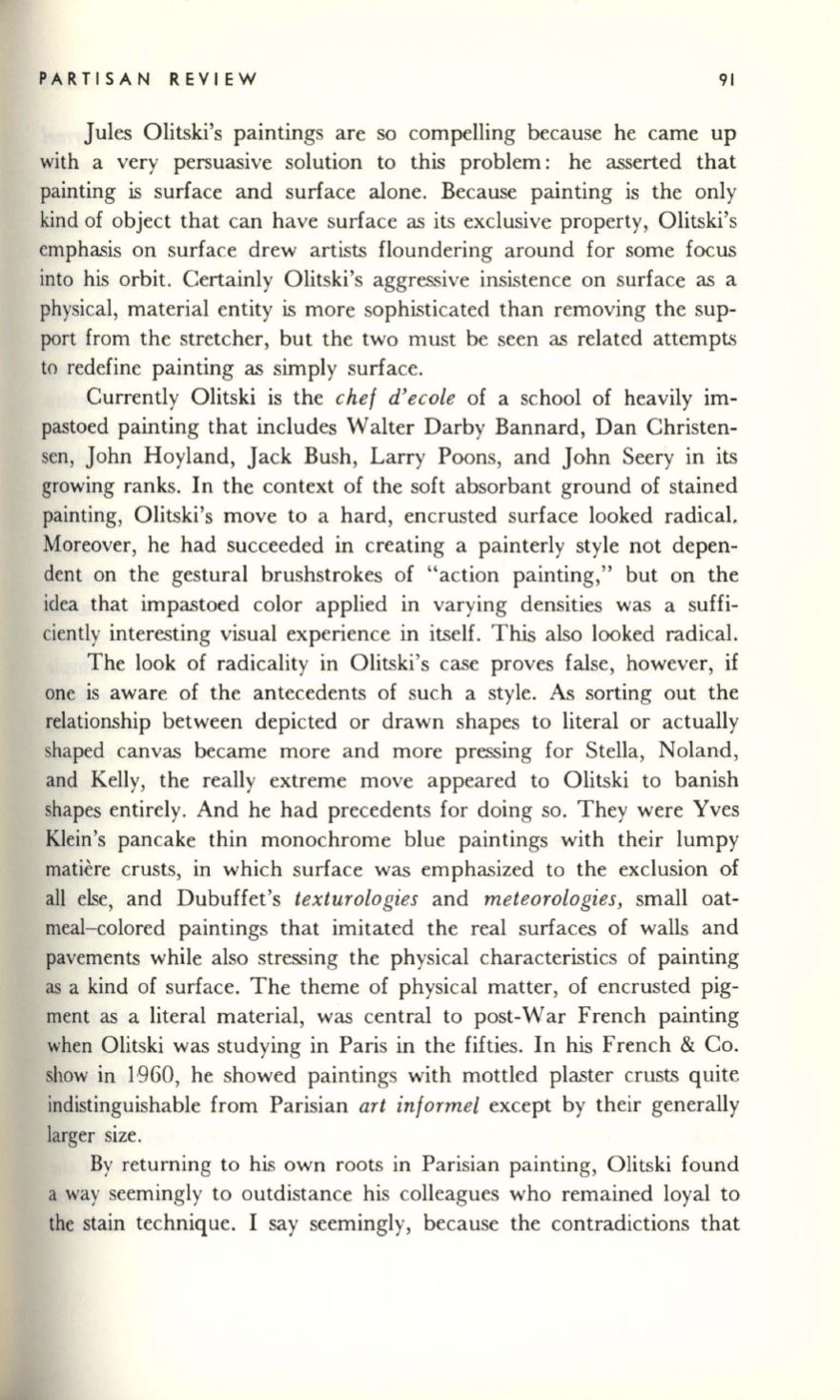
PARTISAN REVIEW
91
Jules Olitski's paintings are so compelling because he came up
with a very persuasive solution to this problem: he asserted that
painting is surface and surface alone. Because painting is the only
kind of object that can have surface as its exclusive property, Olitski's
emphasis on surface drew artists floundering around for some focus
into his orbit. Certainly Olitski's aggressive insistence on surface as a
physical, material entity is more sophisticated than removing the sup–
port from the stretcher, but the two must be seen as related attempts
to redefine painting as simply surface.
Currently Olitski is the
chef d'ecole
of a school of heavily im–
pastoed painting that includes Walter Darby Bannard, Dan Christen–
sen, John Hoyland, Jack Bush, Larry Poons, and John Seery in its
growing ranks. In the context of the soft absorbant ground of stained
painting, Olitski's move to a hard, encrusted surface looked radical.
Moreover, he had succeeded in creating a painterly style not depen–
dent on the gestural brushstrokes of "action painting," but on the
idea that impastoed color applied in varying densities was a suffi–
ciently interesting visual experience in itself. This also looked radical.
The look of radicality in Olitski's case proves false, however, if
one is aware of the antecedents of such a style. As sorting out the
relationship between depicted or drawn shapes to literal or actually
shaped canvas became more and more pressing for Stella, Noland,
and Kelly, the really extreme move appeared to Olitski to banish
shapes entirely. And he had precedents for doing so. They were Yves
Klein's pancake thin monochrome blue paintings with their lumpy
matiere crusts, in which surface was emphasized to the exclusion of
all else, and Dubuffet's
text urologies
and
meteorologies,
small oat–
meal-colored paintings that imitated the real surfaces of walls and
pavements while also stressing the physical characteristics of painting
as a kind of surface. The theme of physical matter, of encrusted pig–
ment as a literal material, was central to post-War French painting
when Olitski was studying in Paris in the fifties. In his French
&
Co.
show in 1960, he showed paintings with mottled plaster crusts quite
indistinguishable from Parisian
art informel
except by their generally
larger size.
By
returning to his own roots in Parisian painting, Olitski found
a way seemingly to outdistance his colleagues who remained loyal to
the stain technique. I say seemingly, because the contradictions that


